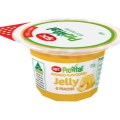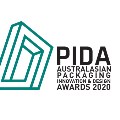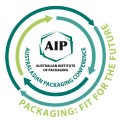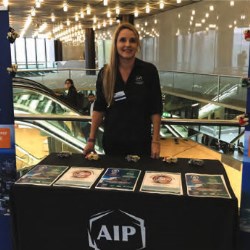If this is your company, CONTACT US to activate Packbase™ software to build your portal.


A gloss finish has been aesthetically pleasing to consumers, because of its high reverse print quality and clinical reflective finish. It presented a pack image that is high quality, fresh and professionally produced. This was achieved by initially reverse printing an image to a transparent film (like BOPP or PET) and then laminating this to a secondary substrate.
This was particularly interesting for packs that were traditionally packed in surface printed papers and films, where most surface printed packs would look 'tired' after pack handling. Gloss varnishes were lacking and could not come close to the reverse printed film laminations. Additionally the reverse printed film presented the perfect scuff resistance and also allowed packs to be printed in the seal areas. These glossy packs stood out on the supermarket shelves and everyone wanted it.
Form Fill and Seal packs, like powder sachets, chip packs and labels, started to convert to the superior laminations. Based on the varnishes unmatched gloss performance against reverse printed films, this trend continued until a majority of flexible packs were using the high gloss reverse printed films.
Eventually there was a continuous line of gloss packs on the supermarket shelves. Furthermore, traditional PE coated Paper wraps like ice-cream lollies were being replaced with gloss finished surface printed BOPP's. Paper/Foil/PE type sachets were going to more extremes of adding an extra PET film, gloss finishing the more costly PET/ Paper/Foil/PE laminate.
From a marketing perspective, it became frustrating to achieve product differentiation on the super glossy super market shelves.
Over the last five years, in response, there has been a gradual reversal from gloss to a matte as a point of difference. A more natural looking paper appearance has become more appealing to consumers from an environmental perspective. The matte finish also better suits the image of certain products being packed. Chip packs are an example of this.
About eight years ago only a few 'kettle' type chips were packed with a matte finish. Today the matte finish has spread across many other chip types and brands. Similarly, some of the chocolate coated confectionery packs have also moved from gloss to matte finishes. Interestingly, it has been said that consumers have a subconscious association of gloss packs and 'weight gain'. Packing theses type of products in a matte finish breaks this subconscious association and creates a more healthy perception of the product.
There is also a growing trend in combining a matte and gloss finish on the packs. This involves a specialised printing process, but presents unique finishes on the packs, where the packs are predomi- nately matte, but have a gloss finish enhancements over the brand names or specific images. This is now popular and frequently seen on ground coffee or coffee bean packs.
More recent printing technologies have developed varnishes and inks that present much improved scuff resistance plus matte and gloss outcomes, which rival the reverse printed films. One can now achieve excellent print finishes and quality in paper laminates, making it easier for consumers to tear open the packs or sachets.
Written by Brent Du Preez, MAIP, Australian Institute of Packaging






.jpg)




























